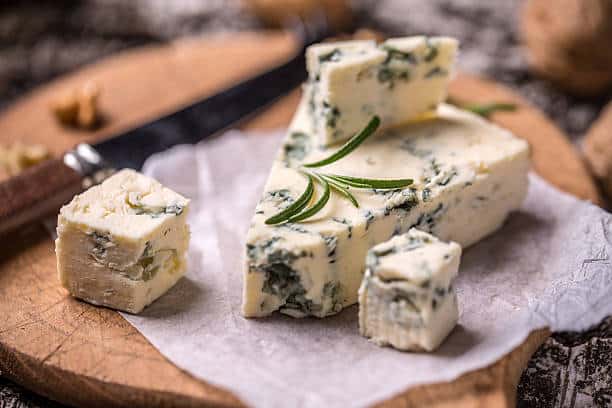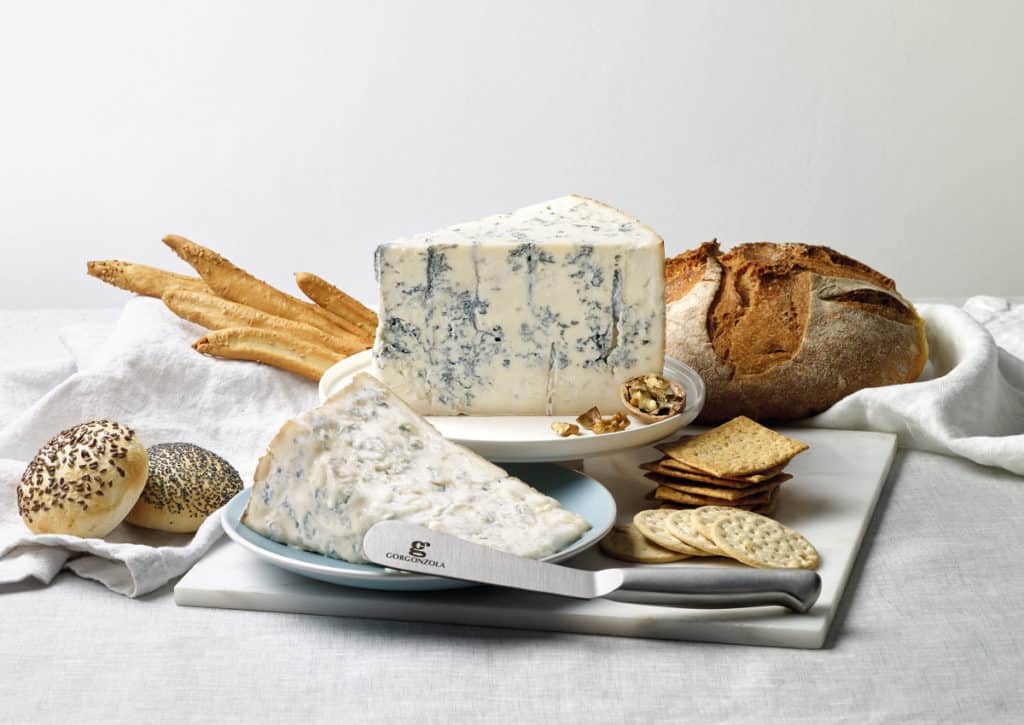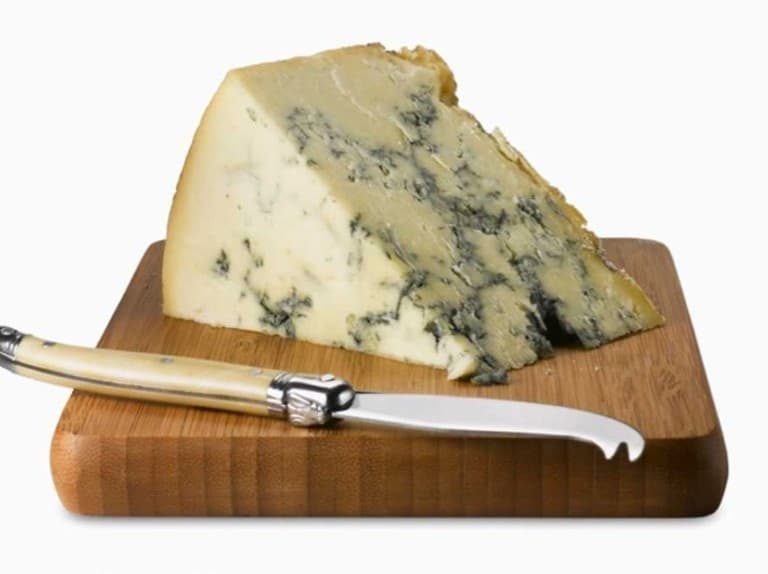Gorgonzola Vs Blue Cheese or Bleu Cheese: A rich cheese made from sheep’s or cow’s or even goat’s milk. The cheese has molds that bloom themselves internally in the form of blue veins. This cheese is manufactured traditionally in France. There are many varieties of blue cheese, like Maytag blue, Cambrales, Chiriboga Blue, etc. Since there are so many varieties, it can get confusing what is the differences. Hence, this article will put some light on the said matter.
Gorgonzola: Semi-soft yet strongly flavored blue cheese made with the finest cow’s milk in Italy. This cheese happens to be a type of Blue Cheese.
Contents
Is gorgonzola milder than blue cheese?

The name comes from the village from where the cheese was first made; Gorgonzola, Italy. Traditionally made with cow’s milk, it is now made with high-quality goat’s milk too. To date, only 25 cheese factories have the equipment to make the cheese traditionally throughout the world. This cheese has green or blue striations and strips produced due to the effect of the Penicillin Mold on the Curd. This cheese needs to sit for three to four months at a low temperature to let the molds bloom completely. It has a milder flavor and the texture is quite soft.
This cheese was made accidentally by a cheese maker in France. The Bleu Cheese includes a glass of cheese treated with molds. This particular cheese has blue, grey or at times even green stripes and spots throughout the white cheese. Traditionally, blue cheese is made from the milk of sheep, cows, or goats. The mold used in bleu cheese is Penicillin Glaucum Mold. Blue cheese is aged in a highly temperature-controlled Environment. A cave is preferred for three-four months after the mold has been induced inside the cheese for the process. Its texture is crumbly and is considered to have been quite flavourful. Here is Gorgonzola Vs Blue Cheese.
Are gorgonzola and blue cheese the same?

Gorgonzola is being produced in the gorgonzola town of Italy way back. This colored cheese is supposedly dated back to 879 AD. The color effect of marbling was added as late as the 11th century. This cheese is now being produced in Northern Italy commercially. Piedmont and Lombardy are two known places to manufacture gorgonzola cheese in Northern Italy.
Even though discovered by accident, blue cheese happens to be one of the most appreciated cheeses throughout Europe. The cheese once mistakenly was left to age in a cave for three-four months. Even now, caves and cold temperatures are the most effective blooming environment for spores and molds. Stilton was discovered as late as the 18th century. Although, Roquefort was discovered earlier, somewhere near the 1070AD.
Gorgonzola Vs Blue Cheese appearance

The gorgonzola cheese has blue-green veins of spores running throughout the cheese. It appears to quite crumbly and soft.
The blue cheese, on the other hand, has bluish-greyish spotting throughout cheese. It appears to be quite firm and strong.
Gorgonzola vs blue cheese taste

While gorgonzola can be very salty, crumbly, and soft, the marbling of the mold throughout the cheese doesn’t quite have a strong smell. But, Blue cheese on the other hand has a sharp taste and strong smell. Although, both the cheeses happen to be quite salty, it’s the smell of the blue cheese that makes it stand out from the latter.
Gorgonzola Compared To Blue Cheese

Prepared from unskimmed cow’s milk, Penicillin Glaucum Mold is added to the milk to create the blue or green veins in the cheese. During the process of creating gorgonzola cheese, the milk is initially treated with bacteria and then the Penicillin mold is added to it. The cheese is then left to cave for around four months, where metal rods are inserted. This allows the mold spores to grow gradually throughout the cheese in form of veins. The same growth later creates the colorful marbling.
Even though bleu cheese is made from the same penicillin mold, the cheese is made from a variety of milk. The penicillin is injected inside the cheese. But, the same process of caving is followed. This cheese too takes around three to four months to develop spores before it is sold.
Gorgonzola vs blue cheese nutrition
1 ounce of gorgonzola has 100 calories and 9 grams of fat. But, 1 ounce of blue cheese is said to have 8.1 grams of fat even though the calories are the same. both the cheese has almost the same amount of sodium, carbohydrates, and even saturated fat contents.
Can you substitute Gorgonzola for blue cheese?

Gorgonzola is of two types, gorgonzola Piccante, which is sharp and flaky and gorgonzola Dolce, which is comparatively softer and creamier. You can substitute Gorgonzola Piccante for blue cheese in your recipes.
What is the blue stuff in blue cheese?
The blue stuff in blue cheese is actually the spots made by induced penicillin mold in the cheese.
Can I eat blue cheese if I’m allergic to penicillin?

You can eat blue cheese if you are allergic to Penicillin because very few people are allergic to both the cheese and the drug. But it is advised to take a taste test just to be sure.
Is blue cheese an antibiotic?
The cheese-making penicillin is not medically effective because they are not penicillin producers. Although, they do carry some antimicrobial features.
Can blue cheese get moldy?

Even though, blue cheese is made of molds, it can still go bad.
Can blue cheese kill you?
Although penicillin is not considered a toxin, compounds formed from the molds can be myotoxins. Therefore you should measure your blue cheese intake. Blue cheese won’t necessarily kill you, but if consumed without limit it can have harmful effects.
Also check out – Can you freeze cottage cheese?





